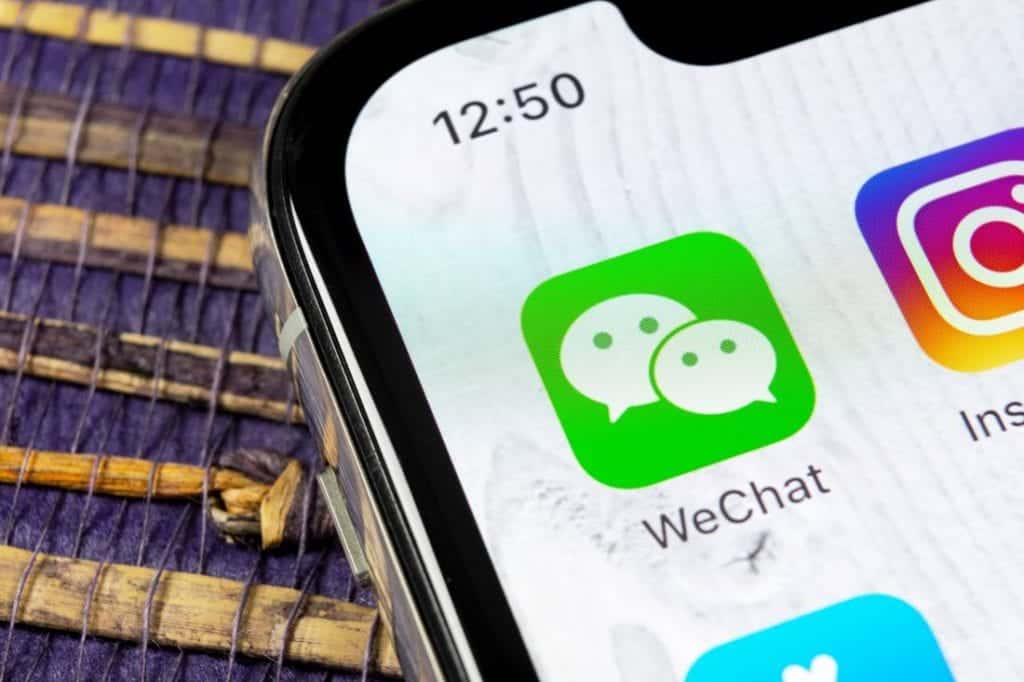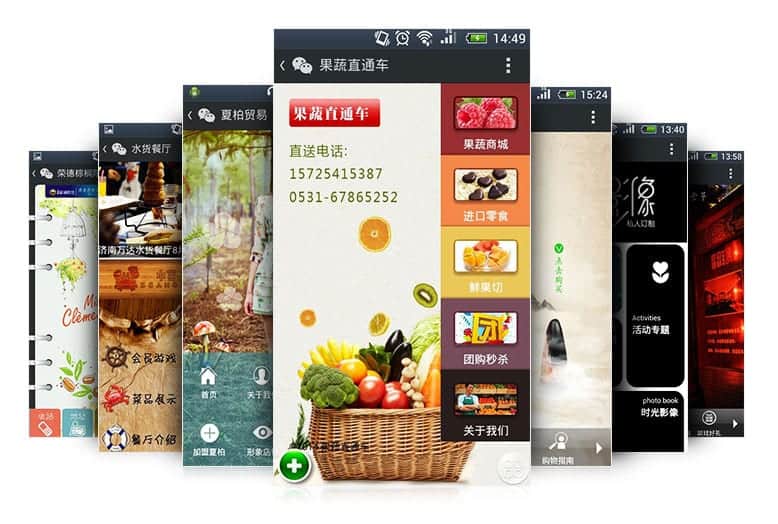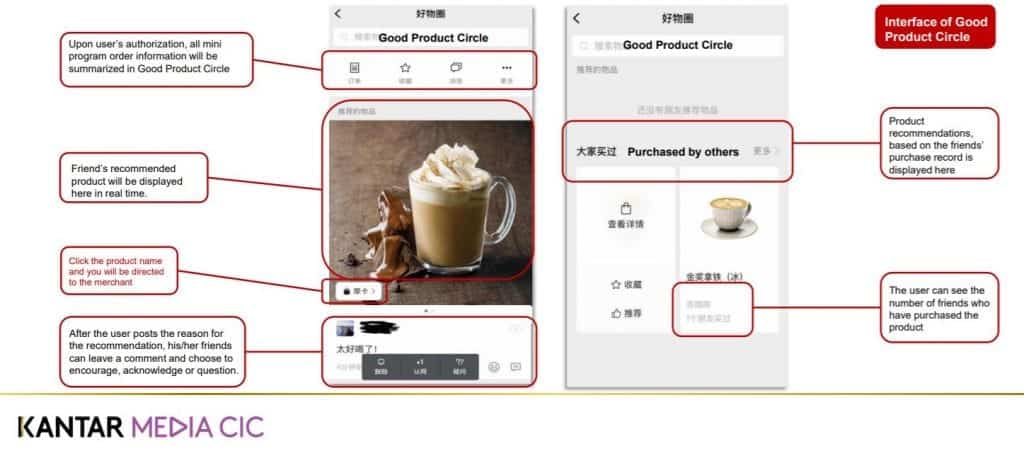Where Social Media Meets E-Commerce = Social Commerce
As you likely already know, China is the world’s largest market for E-commerce. Don’t believe it? Goldman Sachs predicted that China’s total E-commerce market will reach over USD $1.7 Trillion by 2020. Contrast this with the United States where the market is only expected to reach USD $684 billion by 2020 according to E-marketer. Behind this rise are the popularity of social commerce shopping apps in China.
The latest trend over the last couple of years in Chinese e-commerce has been the rise of social commerce platforms, which are essentially shopping apps in China that combine social media and e-commerce into China social ecommerce. These shopping apps give users the opportunity to share their purchases, suggestions, and feedback, which helps to encourage impulse purchasing and build trust. In a recent study, Nielsen China found that 80% of impulse purchases in China were made due to social recommendations (online content, friends’ suggestions, etc.)
Social Commerce by its nature is a social media platform that offers an e-commerce experience within the platform. Western platforms that include this feature are Facebook, Pinterest, and Instagram. However, none of the Western platforms have seen the levels of success that have been seen in China as of yet.
Social Commerce is still relatively new, but it’s started to kick into gear over the last few years. It’s gotten so popular recently that Iresearch found over 70% of respondents in a recent study admitted to making purchases through social media!
Social commerce tends to be most popular among two distinct consumer groups, those outside Tier 1 and Tier 2 cities and Generation-Z. Those in more rural areas have limited access to information so online reviews and bargains play an important role in their purchasing decisions. Gen-Z, on the other hand, is always trying to keep up with the latest trends so naturally, social commerce platforms are an ideal place to find them.
In this article, I’ll go over the top 3 social commerce platforms and why they should definitely be on your radar of shopping apps in China if you have any interest in selling online in China.
#1. XiaoHongShu – Instagram, Pinterest, and Amazon in One!

XiaoHongShu is a social e-commerce platform launched in 2013 and has become incredibly popular in recent years. XiaoHongShu translates to “Little Red Book” in English but goes by the name of “Red” in the English speaking world. In its initial days, the platform functioned as a social media platform where users could share overseas shopping tips and product reviews with a focus on the fashion and beauty industries.
However, in 2014 the platform added E-Commerce functionality making it one of the first and most popular social e-commerce platforms in China. Since then many famous overseas brands have joined the platform to sell their products into the Chinese market.
XiaoHongShu has gained tremendous traction since its biggest year in 2015, where it grew its GMV from just 1 million RMB to over 100 million RMB over a six month period. As of January 2019, the platform had over 200 million monthly active users
XiaoHongShu As A Social Commerce Platform and One of the Largest Shopping Apps in China
XiaoHongShu provides a range of features that leads users into a cycle of reading, liking, and purchasing. While XiaoHongShu is an e-commerce platform, the reason it has been able to attract users to the platform is its social features. This is attractive for marketers as well as it can help to foster word of mouth marketing and lead products to go viral with the right content marketing strategy.
The effects of word of mouth can be seen throughout the XiaoHongShu platform, with popular posts and products seeing strong engagement rates and shares across platforms. XiaoHongShu is also one of the only social media platforms in China that allows users to share content outside of the platform, with users able to share posts to two of China’s largest social media platforms, WeChat and Weibo, for further reach.
As with any Chinese social media platform, KOLs are also highly active on the platform and are some of the largest sources of user-generated content. Brands work with KOLs to promote their products and provide reviews for other users. KOLs have become so important to the platform that XiaoHongShu even launched its own influencer marketing platform in 2019 to help brands find the right influencers and manage their campaigns in one place.
#2. Pinduoduo: Where Group Buying Meets E-Commerce

Pinduoduo is a platform that has been making headlines in China’s digital landscape if you haven’t been paying attention. Pinduoduo takes the group buying aspects of platforms like Groupon and combines it with a full-fledged E-commerce experience on par with the likes of T-Mall, Taobao, or Amazon.
Pinduoduo was founded pretty recently with the platform going live in 2015. Pinduoduo saw the fastest growth on record for any e-commerce company in China with its GMV exceeding RMB 100 billion within just 2 years and 3 months of its launch. It took Jingdong nearly 4 times as long to achieve a similar GMV just to give you a frame of reference.
In just 3 years Pinduoduo became so successful that it was able to initiate its own public offering on the Nasdaq stock exchange. Pinduoduo succeeded largely because it chose not to compete in areas where more established e-commerce players had control of the market. Pinduoduo chose to target tier 3 and tier 4 cities, recognizing that these markets would be engines of future growth in the coming years as China’s economic success spreads from the tier 1 and 2 cities westward.
This strategy was clearly successful with Pinduoduo achieving market penetration rates in tier 3 and tier 4 cities even greater than that of Taobao! As of May 2019, the platform has nearly 300 million users according to its Q1 financial results.
Pinduoduo – Social Commerce For Bargain Hunters
Pinduoduo has been so successful due to its unique social commerce features that encourage sharing posts/products, posting reviews, and simply just opening the app in exchange for discounts & free gifts.
All of these incentives are designed to increase the platform’s exposure and encourage users to make a purchase. Given the discounts on the platform, a huge amount of the purchases made on the platform are driven by impulse. In recognizing this kind of user behavior, Pinduoduo began providing users with rewards simply for opening the app, as even just taking a glance at the daily deals could potentially drive purchase for many users.
The real rewards on the platform are saved for those who utilize the social functions to the greatest extent. During a group buying promotion, users are given a link that they can share with friends. If the users are able to drive others into making a purchase using the provided link they will receive discounts or with enough referrals even a free product!
Overwhelmed by Digital Marketing?
Just released: my new book to help small businesses, entrepreneurs, and marketers master digital marketing in today’s digital-first world.
Drawing on my Fractional CMO experience, Digital Threads simplifies complex strategies into clear, actionable steps for success.
Transform your business today—grab your copy! Click the cover or button below to buy on Amazon.
Given that Pinduoduo’s targets more rural areas where people are traditionally more price-sensitive, these features make the platform incredibly sticky.
While these features are powerful they might not have been as successful if not for the companies partnership with Tencent, which allowed users to share content on China’s largest social media platform, WeChat. By allowing Pinduoduo users to share their products on WeChat Tencent gave Pinduoduo a substantial push toward becoming the e-commerce powerhouse that it is today.
3. WeChat – The Social Media App in China That Does Everything

I bet this one didn’t really surprise anyone. Wechat is a contender in nearly every category from marketing to e-commerce, so it’s no surprise that is also one of the most powerful social commerce platforms in China. Often called China’s Facebook, WeChat has developed into something much more than just a social media app!
I won’t go too in-depth on WeChat’s user stats, as there are hundreds of blogs out there on the topic. The app has over 1.1 billion users and it has become a huge part of daily life in China, with the app offering payments, e-commerce, taxi-hailing services, and so much more.
While WeChat might have hundreds of functions there are just a few that make it a player in the social commerce market.
WeChat’s Social Commerce Features
WeChat has three functions that provide social commerce functionality, WeChat Stores, WeChat Mini-Programs, and The WeChat Good product Circle. I’ll cover each of them in a bit more detail below.
WeChat Stores
These have gone a bit out of style since the launch of WeChat mini-programs, which offer more customization and functionality than the standard WeChat store. WeChat stores are mobile websites hosted in WeChat and connected to a WeChat Official Account.

WeChat stores are one of the easiest ways to get started selling through shopping apps in China, however, the ability to promote these stores is limited. These stores can only be accessed through a WeChat Official Account or through a user sharing the store/product on WeChat. This narrow on-ramp is what has led many brands to skip this option altogether and move on to WeChat mini-programs.
While WeChat shops aren’t the ideal solution for everyone many have seen tremendous success by working with KOLs to promote their stores and products.
WeChat Mini-Programs
WeChat mini-programs are essentially apps that function within the ecosystem, allowing users to access app-like functions without ever having to leave WeChat!
WeChat Mini-Programs have made tremendous strides in 2018 and 2019. When they first launched mini-programs had quite the rough start with many thinking they’d never pick up steam. However, as Tencent invested more and more into space through supporting developers and brands willing to test this new feature usage has skyrocketed!
Today there are over 700 million monthly active users of WeChat mini-programs. While the majority of WeChat mini-programs are games, the second-largest category in e-commerce.
Companies like JD.com and Pinduoduo have launched their own WeChat mini-programs in the hope of further tapping into the WeChat user base. Users can share products (or the mini-programs themselves) to their WeChat moments or directly to other users.
The WeChat Good Product Circle
The WeChat Good Product circle was released earlier in 2019 making it an extremely new feature. With its last major update, WeChat 7.0, Tencent added a feature called the “shopping list” With this feature users could save products that they found on WeChat mini-programs on their shopping list.
The WeChat Good Product Circle basically allows users to see what other people are purchasing. To see what everyone is buying users simply need to check in the discover section to see 3 different categories, “recommended products,” “everyone bought,” and “circle group”

A short explanation of the WeChat Good Product Circle from Kantar Media
In the recommended products category users will find products that their friends have recommended to everyone that they are currently friends with. Users who view the “recommended products” can see who is recommending which product to determine whether or not they are trustworthy.
In the “everyone bought” section the listings are anonymous. This section is designed to create a sense of FOMO. If everyone is buying something you probably should too right? It’s this kind of psychology that makes social selling so effective in the first place!
Finally, the “Circle Group” allows users to create their own private groups where they can share the products they would like to recommend. If you’d like to keep your sharing a bit more private this would be the feature for you.
Overall the WeChat Good Product Circle is still a bit underdeveloped and will likely see changes as it gets more popular throughout the year.
Author Bio
Tony DeGennaro is an expert in Chinese Social Media. Tony is a passionate marketer with interests in social media, marketing analytics, and search engine optimization. He specializes in Chinese Social Media and Advertising. After getting his MBA with a concentration in Marketing at CUHK he became one of the founding partners of Dragon Social in Hong Kong.











Nice Information regarding Blog Commenting very nice helpful post!
he writes about content marketing strategy here, China Social Media is a passionate marketer with interests in social media, marketing analytics, and search engine optimization
They should be streamlined for you and valuable for your customers specializes in Chinese Social Media and Advertising After getting a concentration in Marketing